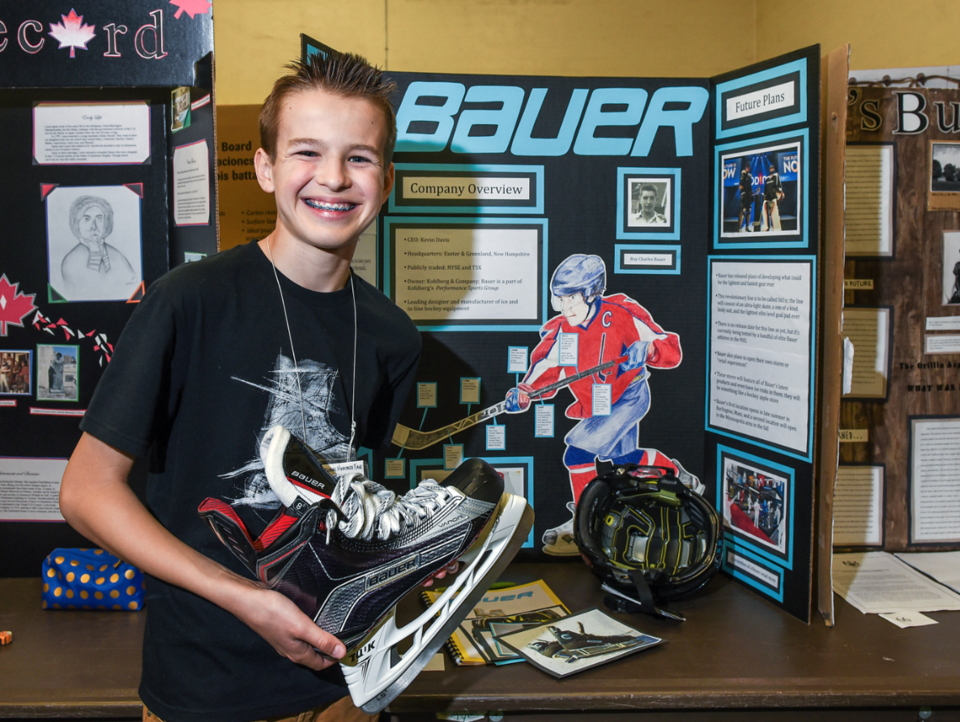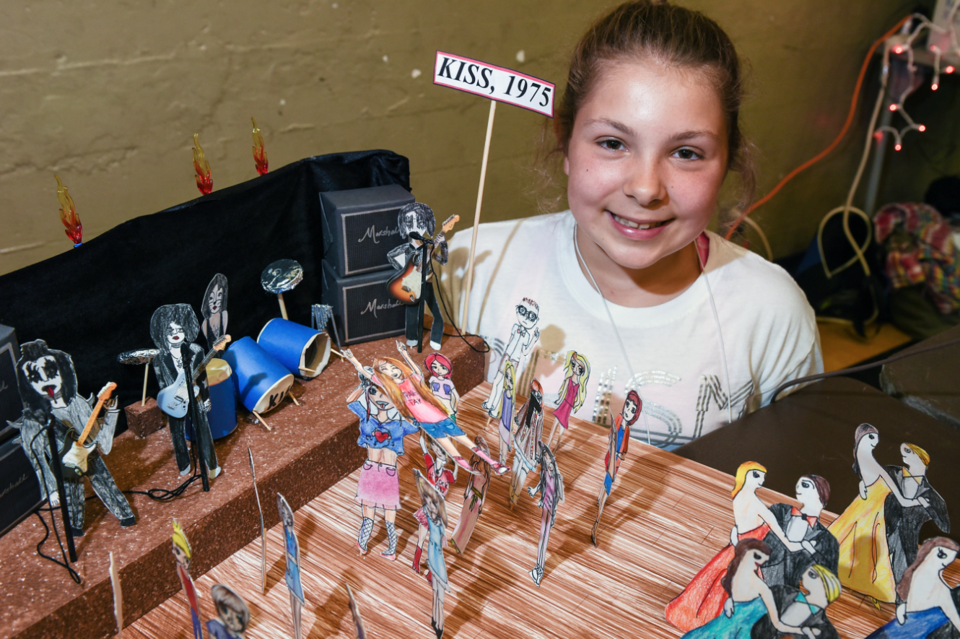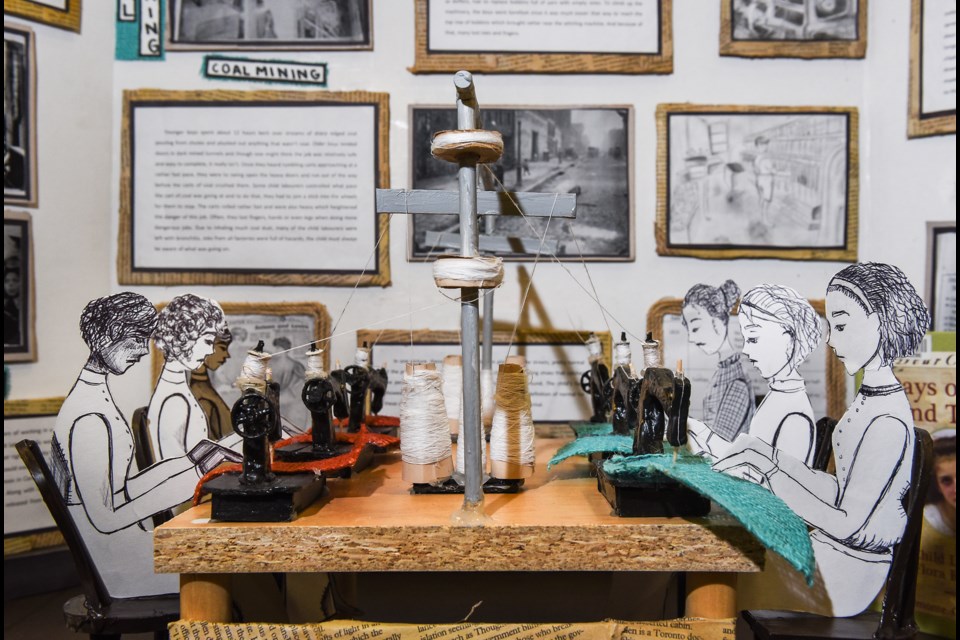The level of knowledge in the gymnasium at the Marpole-Oakridge Community Centre was so high you would have been surprised, if you hadn’t been told ahead of time, that it came from the brains of elementary school kids.
It was the first time in Vancouver’s 11-year history of participating in the British Columbia Heritage Fairs Society that select students in grades 4 to 10 from all across the city were invited to showcase their projects to the public. While the work was presented by way of the traditional upright three-panel board, it was not of the paper mâché volcano variety — topics included a fascinating range of the little-known to the well-known aspects of Canadiana. Topics ranged from Ontario’s Orillia Asylum for Idiots and the Edmonton Fur Tannery to the more local Granville Island and the Vancouver Rape Relief & Women’s Shelter.
“Some of these students ask their parents if they can be in the class the next year where they know a teacher is participating,” said Janet Morley who has been Vancouver’s Heritage Fair coordinator since 2007. “They have that passion for their particular project. Looking back over the years, I’ve probably had 3,000 different topics. Kids come up with anything.”
Not having limits, aside from geographical, gives students the creative fuel they need to get carried away. The project start month is January and Morley said they are sparked by a variety of inspiration, as in the case of Amy Liu, a Grade 7 student at Sir Sandford Fleming elementary who read Barbara Greenwood’s Factory Girl and discovered the sad history of child labour in Canada during the 1800s and early 1900s.
“I was really surprised because, my goodness! I didn’t know child labour even happened in Canada,” said Liu, who is one of the five students from Vancouver selected to present at the B.C. Fair in Victoria, July 2 to 6.
Another student, Euan Scipperfield, was inspired not by books but by something he was exposed to every day.
“Hockey is pretty much my life,” said the Grade 7 student at Edith Cavell elementary. “I’m on the ice every day and everybody I play with uses Bauer hockey equipment so I always wondered about the story of their success.”

Scipperfield, a bantam division goalie for the Vancouver Thunderbirds, said the most fascinating thing he learned from research was that, in 1927, the Bauer family started the business as a shoe company in Kitchener, Ont., and created the first hockey skate blade that was permanently attached to a boot.
It’s not just strong research skills that earn entry into the Vancouver Heritage Fair; it’s also the ability to demonstrate critical thinking skills, said Morley.
“The students work really hard in their approach to the critical thinking aspect rather than just pure research. By the time the school fair happens in March or April, everybody in the class has the opportunity to present their project for 10 to 15 minutes and then each teacher picks three students to represent each class at the event here,” she said.
“Sometimes there are duplicate ideas but most teachers say, ‘I’m not having two Louis Riels, or two Battles of Abraham, or two Tim Hortons or whatever.’ They end up negotiating because the students don’t want to end up in competition with one another.”

It’s a competition just to get into the Heritage Fair selection. There were about 100 students involved this year and that explains why the competition outgrew its previous home at the Museum of Vancouver two years ago.
Killarney secondary school offered its gymnasium to the group, along with the suggestion the fair move to the community centre for one day to give the public a rare glimpse of the projects. And, even then, with the allowable numbers, it’s a challenge for the judges to choose what students get in.
“I have a waiting list,” said Morley. “But it’s tough, we’ve chosen the best ones but I could go into the gym next door and put another 100 projects up and you wouldn’t notice any difference because the quality is outstanding.”
[email protected]
@rebeccablissett



